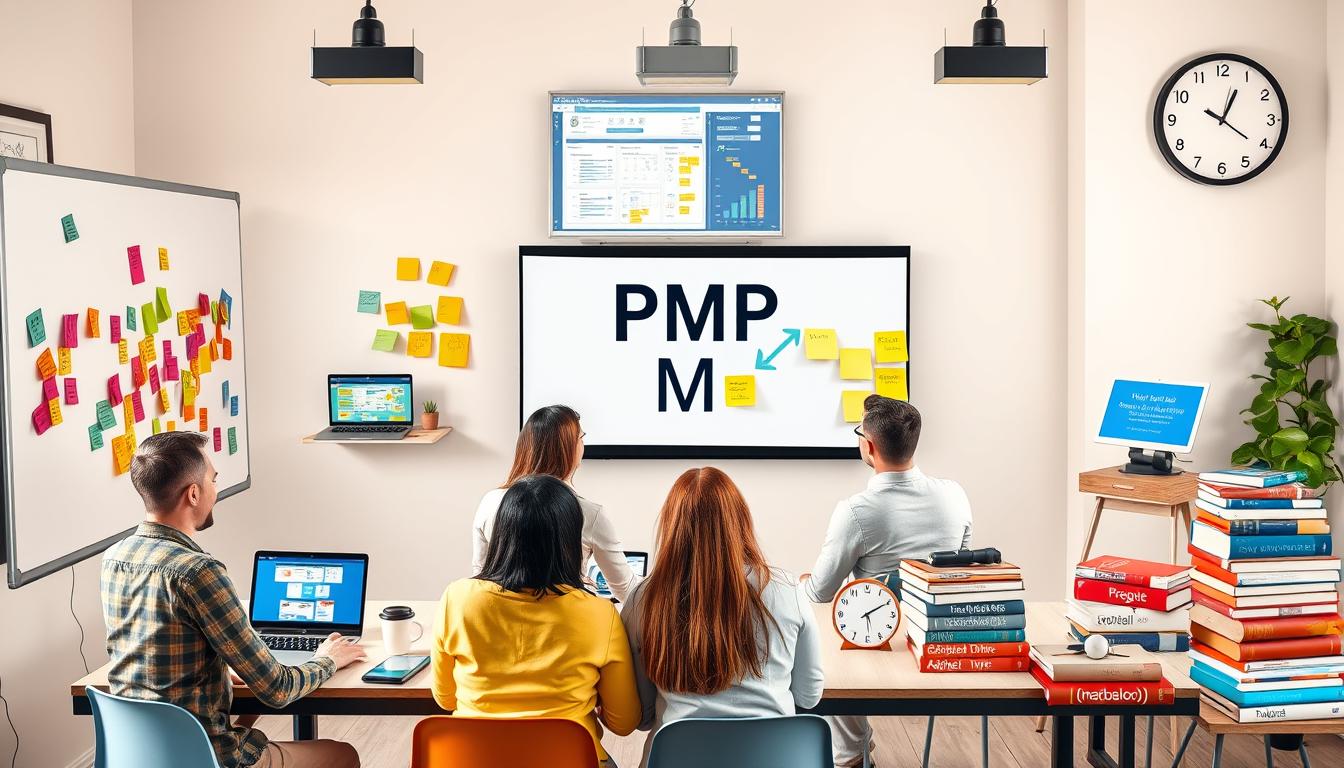Quality management plans are essential for organizations that want to consistently deliver high-quality products and services. A quality management plan provides a structured approach to managing and assessing the quality of your organization’s outputs, and it helps to ensure that client requirements are met while also meeting internal standards. This article explores the key components of an effective quality management plan and provides practical tips for creating one that works for your organization.
Understanding the Importance of Quality Management Plans
A quality management plan is a roadmap for how your organization will monitor, measure, and review quality standards while also meeting regulatory requirements. By having a plan in place, you can identify potential quality issues early and address them before they become bigger problems. This will help your organization to maintain high levels of client satisfaction and improve your reputation in the industry.
Additionally, a quality management plan can also help your organization to reduce costs by minimizing waste and rework. By implementing quality control measures, you can ensure that products or services are produced efficiently and effectively, reducing the need for costly rework or repairs. This can lead to increased profitability and a more sustainable business model.
The Benefits of Implementing a Quality Management Plan
The primary benefit of a quality management plan is improving the consistency and accuracy of your organization’s outputs. However, other benefits include:
- Reduced costs from improved efficiency and productivity
- Increased employee engagement and satisfaction from having clear quality standards to work towards
- Enhanced reputation among clients and stakeholders
- Better decision-making through access to accurate data and metrics
Another benefit of implementing a quality management plan is that it helps to identify areas for improvement within your organization. By regularly reviewing and analyzing your processes and outputs, you can identify any inefficiencies or areas where quality can be improved. This allows you to make targeted improvements and continuously enhance the quality of your products or services.
Defining the Key Components of a Quality Management Plan
A quality management plan should outline the following key components:
- The scope of the plan, including the products or services that it covers
- The quality policies and procedures that will be followed
- The quality objectives and goals of the organization
- The roles and responsibilities of team members involved in quality planning
- The methodology for identifying and addressing quality issues
- How quality data will be captured, analyzed, and reported
- How the quality management plan will be reviewed and updated over time
One important aspect of a quality management plan is the communication strategy. This includes how information about quality performance and issues will be shared with stakeholders, both internal and external. It is important to have a clear and effective communication plan in place to ensure that everyone involved in the quality management process is informed and aware of any changes or updates.
Another key component of a quality management plan is the training and development of team members. It is important to ensure that all team members involved in quality planning have the necessary skills and knowledge to effectively carry out their roles and responsibilities. This may involve providing training on quality management principles, tools, and techniques, as well as ongoing professional development opportunities.
Identifying the Roles and Responsibilities of Team Members Involved in Quality Planning
It is important to identify the roles and responsibilities of all team members involved in the quality planning process. This will help to ensure that everyone understands their role in maintaining quality standards and accountability for meeting quality objectives. Some of the roles involved in quality planning include:
- The quality manager, who is responsible for overseeing the quality management plan and ensuring that it is implemented effectively
- The quality team, who are responsible for carrying out quality assessments, monitoring quality performance, and identifying areas for improvement
- The operations team, who are responsible for implementing quality standards and procedures
- The procurement team, who are responsible for ensuring that suppliers meet quality requirements
- The management team, who are responsible for making strategic decisions related to quality management
Effective communication is key to ensuring that all team members understand their roles and responsibilities in quality planning. Regular meetings and updates should be scheduled to discuss progress, identify challenges, and make necessary adjustments to the quality management plan. It is also important to provide training and support to team members to ensure that they have the necessary skills and knowledge to carry out their roles effectively. By working together and understanding each other’s roles, the team can ensure that quality standards are met and maintained throughout the project or process.
Establishing Clear Objectives and Goals for Your Quality Management Plan
Establishing clear objectives and goals for your quality management plan is essential. This will help to ensure that everyone involved in the quality planning process understands what they are working towards and the specific outcomes that they are trying to achieve. Objectives and goals should be specific, measurable, achievable, relevant, and time-bound (SMART). Some examples of quality objectives include:
- Reduce the number of client complaints by 20% within the next six months
- Increase customer satisfaction ratings by 10% within the next year
- Achieve a 95% pass rate in regulatory audits
It is important to regularly review and update your quality objectives and goals to ensure that they remain relevant and aligned with your organization’s overall strategy. This can be done through regular performance evaluations and feedback from stakeholders. Additionally, it is important to communicate these objectives and goals to all employees and stakeholders to ensure that everyone is working towards the same outcomes and understands their role in achieving them.
Developing Effective Strategies for Monitoring and Measuring Quality Performance
Measuring quality performance is crucial to identify areas of improvement and track progress towards meeting quality objectives. You can use various metrics such as customer satisfaction ratings, defect rates, and on-time delivery rates to monitor quality performance. It is also important to regularly review these metrics and adjust your quality management plan as necessary.
Another important aspect of monitoring and measuring quality performance is to involve employees at all levels of the organization. By engaging employees in the quality management process, you can gain valuable insights into potential areas of improvement and identify any barriers to achieving quality objectives. This can also help to foster a culture of continuous improvement and accountability.
In addition to using metrics and involving employees, it is also important to leverage technology to monitor and measure quality performance. There are various software tools available that can help automate quality management processes, track metrics in real-time, and provide insights into areas of improvement. By using technology to support your quality management efforts, you can streamline processes, reduce errors, and improve overall efficiency.
Implementing Best Practices for Documenting and Reporting on Your Quality Management Plan
Documenting and reporting on your quality management plan is essential for ensuring that everyone in your organization is on the same page. Best practices for documenting and reporting on your quality management plan include:
- Creating a document that outlines the key components of your quality management plan
- Establishing a reporting structure that includes regular progress reports and dashboards
- Using clear and concise language when documenting quality policies and procedures
- Including standard operating procedures (SOPs) that can be referenced by team members
Another important aspect of documenting and reporting on your quality management plan is to ensure that all team members are trained on the plan and understand their roles and responsibilities. This can be achieved through regular training sessions and workshops, as well as providing access to the documented plan and procedures. It is also important to regularly review and update the plan to ensure that it remains relevant and effective in meeting the needs of your organization and customers.
Ensuring Compliance with Industry Standards and Regulations in Your Quality Planning Process
Ensuring compliance with industry standards and regulations is essential for maintaining quality standards and protecting your business from legal issues. To ensure compliance, you should:
- Stay up-to-date with changes to relevant laws and regulations
- Develop and implement policies and procedures that comply with these laws and regulations
- Train team members on compliance requirements
- Conduct regular audits to ensure that your organization is compliant
It is important to note that compliance is not a one-time task, but an ongoing process. As regulations and standards change, your organization must adapt and update its policies and procedures accordingly. This requires a commitment to continuous improvement and a willingness to invest time and resources into staying up-to-date with industry changes. By prioritizing compliance in your quality planning process, you can ensure that your organization is operating ethically and responsibly, while also minimizing the risk of legal issues and reputational damage.
Leveraging Technology and Automation to Streamline Your Quality Management Plan
Technology and automation can help to streamline your quality management plan by reducing administrative tasks and improving efficiency. Some examples of technology and automation that can be used to support your quality management plan include:
- Automated quality assessments and inspections
- Cloud-based quality management software that enables real-time reporting and collaboration
- Integration with other systems, such as supply chain management or customer relationship management software
- Automated reporting and notification systems
One of the key benefits of leveraging technology and automation in your quality management plan is the ability to collect and analyze data in real-time. This allows you to identify trends and potential issues before they become major problems, enabling you to take proactive measures to address them.
Another advantage of using technology and automation is the ability to standardize processes and procedures across your organization. This can help to ensure consistency and reduce the risk of errors or inconsistencies in your quality management plan.
Conducting Regular Reviews and Audits to Continuously Improve Your Quality Planning Process
Regular reviews and audits of your quality management plan are crucial for identifying areas of improvement and updating your plan accordingly. Reviews and audits should be conducted by an independent third-party auditor, or by an internal team designated to monitor quality performance. When conducting reviews and audits, it is important to:
- Identify areas where your organization can improve its quality management processes
- Ensure that your plan is up-to-date with changes in industry standards and regulations
- Identify employee training needs related to quality management
- Communicate the results of the review or audit to all relevant stakeholders and make any necessary changes to your plan
Communicating Your Quality Management Plan to Stakeholders and Team Members
Communicating your quality management plan to stakeholders and team members is essential for ensuring that everyone is aligned and working towards the same goals. You should:
- Hold regular meetings to discuss progress and issues related to quality management
- Use clear and concise language when communicating quality policies and procedures
- Provide training and support to team members as needed
Overcoming Common Challenges in the Development and Implementation of a Quality Management Plan
The development and implementation of a quality management plan can present various challenges. Some common challenges include:
- Lack of support from senior management
- Poor communication among team members
- Inadequate training for team members on quality management processes
- Lack of resources to implement the plan effectively
To overcome these challenges, it is important to:
- Secure buy-in from senior management by clearly outlining the benefits of a quality management plan
- Ensure that communication channels are open and effective among team members
- Provide adequate training and support to team members
- Allocate the necessary resources to implement the plan effectively
Case Studies: Real-Life Examples of Successful Quality Planning Strategies
Real-life examples of successful quality planning strategies can help to demonstrate the effectiveness of quality management plans. Some examples include:
- The Toyota Production System, which emphasizes continuous improvement and standardized processes
- The ISO 9001 certification, which provides a structured approach to quality management and continuous improvement
- The Lean Six Sigma methodology, which emphasizes process improvement and reducing waste
Conclusion: Why a Comprehensive Quality Management Plan is Crucial for Business Success
A comprehensive quality management plan is essential for any organization that wants to consistently deliver high-quality products and services. It provides a structured approach to managing and assessing quality, and it helps to ensure that client requirements are met and internal standards are maintained. By implementing a quality management plan, your organization can improve efficiency, engage employees, enhance reputation, and make better business decisions.




